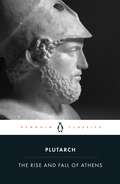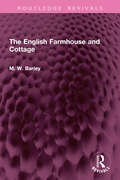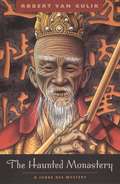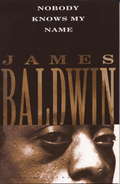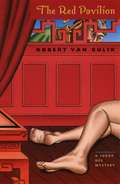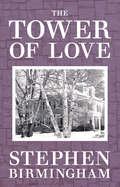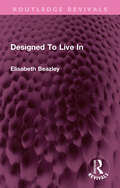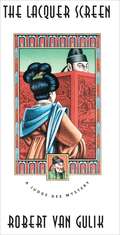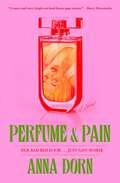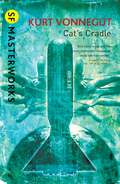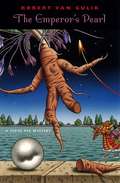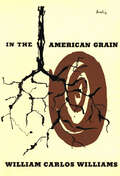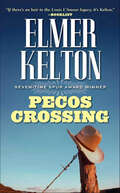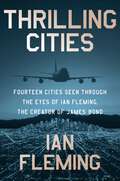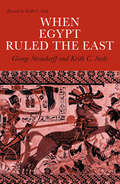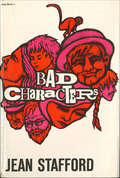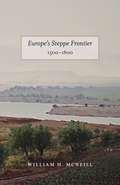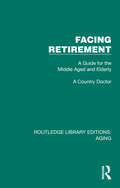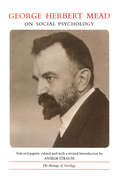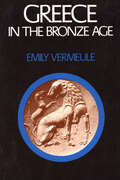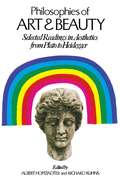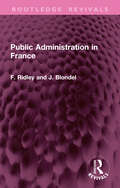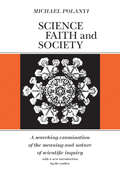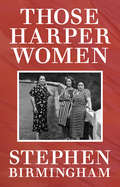- Table View
- List View
The Rise And Fall of Athens: Nine Greek Lives
by PlutarchPlutarch traces the fortunes of Athens through nine lives - from Theseus, its founder, to Lysander, its Spartan conqueror - in this seminal workWhat makes a leader? For Plutarch the answer lay not in great victories, but in moral strengths. In these nine biographies, taken from his Parallel Lives, Plutarch illustrates the rise and fall of Athens through nine lives, from the legendary days of Theseus, the city's founder, through Solon, Themistocles, Aristides, Cimon, Pericles, Nicias and Alcibiades, to the razing of its walls by Lysander. Plutarch ultimately held the weaknesses of its leaders responsible for the city's fall. His work is invaluable for its imaginative reconstruction of the past, and profound insights into human life and achievement. This edition of Ian Scott-Kilvert's seminal translation, fully revised with a new introduction and notes by John Marincola, now also contains Plutarch's attack on the first historian, 'On the Malice of Herodotus'.
The English Farmhouse and Cottage (Routledge Revivals)
by M. W. BarleyFirst published in 1961, The English Farmhouse and Cottage brings together the evidence collected by those who have studied vanished buildings by excavation, and also examined surviving houses with a gentler instrument, the measuring tape. A change is taking place in the attitude towards the old buildings of the countryside. Into the place of the sentimentalist in search of the picturesque and the architect looking for a style have stepped the local historian and the archaeologist. Mr. Barley has built up a picture of the English countryman and his housing needs. He is concerned particularly with the sixteenth and seventeenth centuries since they were the most formative period in the evolution of the modern house.This book is an essential tool in the hands of those who wish to pursue, whether as tourists or as students, an important and fascinating aspect of the history of Rural England.
The Haunted Monastery: A Judge Dee Mystery (The Judge Dee Mysteries)
by Robert van GulikJudge Dee and his entourage, seeking refuge from a mountain storm, become trapped in a Taoist monastery, where the Abbott Jade mysteriously dies after delivering an ecstatic sermon. The monks call it a supernatural experience, but the judge calls it murder. Recalling the allegedly accidental deaths of three young women in the same monastery, Judge Dee seeks clues in the eyes of a cat to solve cases of impersonation and murder. A painting by one of the victims reveals the truth about the killings, propelling the judge on a quest for justice and revenge."Entertaining, instructive, and impressive."—Times Literary Supplement
Nobody Knows My Name: Notes Of A Native Son / Nobody Knows My Name / The Fire Next Time / No Name In The Street / The Devil Finds Work (Vintage International #1)
by James BaldwinFrom one of the most brilliant writers and thinkers of the twentieth century comes a collection of "passionate, probing, controversial" essays (The Atlantic) on topics ranging from race relations in the United States to the role of the writer in society.Told with Baldwin's characteristically unflinching honesty, this &“splendid book&” (The New York Times) offers illuminating, deeply felt essays along with personal accounts of Richard Wright, Norman Mailer and other writers. &“James Baldwin is a skillful writer, a man of fine intelligence and a true companion in the desire to make life human. To take a cue from his title, we had better learn his name.&” —The New York Times
The Red Pavilion: A Judge Dee Mystery (The Judge Dee Mysteries)
by Robert van GulikA chance encounter with Autumn Moon, the most powerful courtesan on Paradise Island, leads Judge Dee to investigate three deaths. Although he finally teases the true story from a tangled history of passion and betrayal, Dee is saddened by the perversion, corruption, and waste of the world "of flowers and willows" that thrives on prostitution.
The Secret Sign
by Gladys MalvernThe handsome and popular young actor, Stephanus, was to make the secret sign during his performance at Senator Decius’s banquet. The sign was the sign of the cross, secret in ancient Rome because the pagans feared and fought these Christians who wanted to destroy the old gods. To Stephanus the sign was merely an amusing part of his monologue. He did not realize it meant something vastly more important to Valeria, the Senator’s lovely daughter, whom he, as an ex-slave, could love but never hope to marry. The sign takes on a new meaning for Stephanus when Valeria is imprisoned as a Christian and sentenced to death. Even her noble father cannot gain a pardon from cruel Nero. But Stephanus is determined to rescue her. Carefully he studies the regime at Mamertine Prison, and carefully he plans his last and greatest performance as an actor. This is a richly peopled story of ancient Rome: the life of the aristocrats, the teachings in the catacombs, the terrible fire that swept the beautiful city, and the terrible suspicions and hates that swept it too. This is also a love story: the love of a young man and woman, and, larger than that, the love of the new brotherhood for mankind and their God.
The Tower of Love
by Stephen BirminghamBack at his family&’s New England estate, a man finds a second chance at love—and a devastating truth—in this novel by the author of Young Mr. Keefe. At thirty-one years of age, Hugh Carey has ended both his marriage and his advertising partnership. With his life at loose ends, he&’s returned to the family home in Connecticut—that imposing castle built by his grandfather—to take stock and start over. His mother is only too happy to offer her counsel, as she does for Hugh&’s sister Patsy. But her reputation as the most effective woman since Lady MacBeth is well earned. Also delighted to have Hugh back is Edrita Everett Smith. She&’s the girl next door—and the one who got away. As Hugh and Edrita reconnect, it seems that little has changed, and their old romance is ready to blossom again. But in this quiet, well-heeled suburb, nothing is as simple as it seems. As buried jealousies come to light and new schemes are hatched, Hugh will learn what it truly takes to forge his own path.
Designed To Live In (Routledge Revivals)
by Elisabeth BeazleyOriginally published in 1962, this book traces the main influences behind modern design in domestic architecture. It does so against the context of the effect each new dwelling has on its environment and the effect its design has on those in the surrounding (and often older, historic) housing stock. Diverse influences such as the bye-law street and Le Corbusier’s Ville Radieuse are discussed, while the ideas bearing on the individual private house range from those of the early nineteenth century villa builders to Frank Lloyd Wright’s prairie houses and the work of Mies van der Rohe. The book closes with a detailed discussion of the problems and possibilities of domestic design in house-building in the late 20th Century
The Lacquer Screen: A Judge Dee Mystery (The Judge Dee Mysteries)
by Robert van GulikEarly in his career, Judge Dee visits a senior magistrate who shows him a beautiful lacquer screen on which a scene of lovers has been mysteriously altered to show the man stabbing his lover. The magistrate fears he is losing his mind and will murder his own wife. Meanwhile, a banker has inexplicably killed himself, and a lovely lady has allowed Dee's lieutenant, Chiao Tai, to believe she is a courtesan. Dee and Chiao Tai go incognito among a gang of robbers to solve this mystery, and find the leader of the robbers is more honorable than the magistrate. "One of the most satisfyingly devious of the Judge Dee novels, with unusual historical richness in its portrayal of the China of the T'ang dynasty."-—New York Times Book Review "Even Judge Dee is baffled by Robert van Gulik's new mysteries in The Lacquer Screen. Disguised as a petty crook, he spends a couple of precarious days in the headquarters of the underworld, hobnobbing with the robber king. Dee's lively thieving friends furnish some vital clues to this strange and fascinating jigsaw."-—The Spectator "So scrupulously in the classic Chinese manner yet so nicely equipped with everything to satisfy the modern reader."-—New York Times Robert Van Gulik (1910-67) was a Dutch diplomat and an authority on Chinese history and culture. He drew his plots from the whole body of Chinese literature, especially from the popular detective novels that first appeared in the seventeenth century.
Perfume and Pain: A Novel
by Anna Dorn&“Perceptive and witty—like a Sally Rooney novel set in Southern California.&” —Star Tribune (Minneapolis) &“It&’s this author&’s best work yet. A Sapphic roller-coaster ride.&” —Kirkus Reviews (starred review) A controversial LA author attempts to revive her career and finally find true love in this hilarious nod to 1950s lesbian pulp fiction.Having recently moved both herself and her formidable perfume bottle collection into a tiny bungalow in Los Angeles, mid-list author Astrid Dahl finds herself back in the Zoom writer&’s group she cofounded, Sapphic Scribes, after an incident that leaves her and her career lightly canceled. But she temporarily forgets all that by throwing herself into a few sexy distractions—like Ivy, a grad student researching 1950s lesbian pulp who smells like metallic orchids, or her new neighbor, Penelope, who smells like patchouli. Penelope, a painter living off Urban Outfitters settlement money, immediately ingratiates herself in Astrid&’s life, bonding with her best friends and family, just as Astrid and Ivy begin to date in person. Astrid feels judged and threatened by Penelope, a responsible older vegan, but also finds her irresistibly sexy. When Astrid receives an unexpected call from her agent with the news that actress and influencer Kat Gold wants to adapt her previous novel for TV, Astrid finally has a chance to resurrect her waning career. But the pressure causes Astrid&’s worst vice to rear its head—the Patricia Highsmith, a blend of Adderall, alcohol, and cigarettes—and results in blackouts and a disturbing series of events. Unapologetically feminine yet ribald, steamy yet hilarious, Anna Dorn has crafted an exquisite homage to the lesbian pulp of yore, reclaiming it for our internet and celebrity-obsessed world. With notes of Southern California citrus and sultry smokiness, Perfume and Pain is a satirical romp through Hollywood and lesbian melodrama.
Cat's Cradle (S.F. MASTERWORKS #70)
by Kurt VonnegutOne of America's greatest writers gives us his unique perspective on our fears of nuclear annihilationExperiment.Told with deadpan humour and bitter irony, Kurt Vonnegut's cult tale of global destruction preys on our deepest fears of witnessing Armageddon and, worse still, surviving it.Solution.Dr Felix Hoenikker, one of the founding fathers of the atomic bomb, has left a deadly legacy to the world. For he is the inventor of ice-nine, a lethal chemical capable of freezing the entire planet. The search for its whereabouts leads to Hoenikker's three eccentric children, to a crazed dictator in the Caribbean, to madness. Felix Hoenikker's death-wish comes true when his last, fatal, gift to mankind brings about an end that, for all of us, is nigh.
The Emperor's Pearl: A Judge Dee Mystery (The Judge Dee Mysteries)
by Robert van GulikIt all begins on the night of the Poo-yang dragonboat races in 699 A.D.: a drummer in the leading boat collapses, and the body of a beautiful young woman turns up in a deserted country mansion. There, Judge Dee—tribunal magistrate, inquisitor, and public avenger—steps in to investigate the murders and return order to the Tang Dynasty. In The Emperor’s Pearl, the judge discovers that these two deaths are connected by an ancient tragedy involving a near-legendary treasure stolen from the Imperial Harem one hundred years earlier. The terrifying figure of the White Lady, a river goddess enshrined on a bloodstained altar, looms in the background of the investigation. Clues are few and elusive, but under the expert hand of Robert van Gulik, this mythic jigsaw puzzle assembles itself into a taut mystery. “If you have not yet discovered Judge Dee and his faithful Sgt. Hoong, I envy you that initial pleasure which comes from the discovery of a great detective story. For the magistrate of Poo-yang belongs in that select group of fictional detectives headed by the renowned Sherlock Holmes.”—Robert Kirsch, Los AngelesTimes “The title of this book and the book itself have much in common. Each is a jewel, a rare and precious find.”—AtlantaTimes
In the American Grain (Second Edition)
by William Carlos WilliamsA new edition of William Carlos Williams’ loving and groundbreaking book about American history, with a new introduction by Rick Moody. Although admired by D. H. Lawrence, this modern classic went generally unnoticed during the years after its publication in 1925. Yet it is “a fundamental book, essential if one proposes to come to terms with American literature” (Times Literary Supplement). William Carlos Williams was not a historian, but he was fascinated by the texture of American history. Beginning with Columbus’s discovery of the Indies and moving on through Sir Walter Raleigh, Cotton Mather, Daniel Boone, George Washington, Ben Franklin, Aaron Burr, Edgar Allan Poe, and Abraham Lincoln, Williams found in the fabric of familiar episodes new shades of meaning and configurations of character. He brought a poetic imagination to the task of reconstructing a live tradition for Americans, and what results is one of the finest works of prose to have been penned by any writer of the twentieth century.
Pecos Crossing: Two Complete Novels Of The American West
by Elmer KeltonJohnny Fristo and Speck Quitman, young, hard-working cowboys from Fort Concho, Texas, have worked six months--at $20 a month--on the Devil's River. Their boss, a hawk-faced cow trader named Larramore, reneges on the money he owes the boys and sneaks out of the cow camp and heads for San Angelo.Fristo is tall and thin, his mind a hundred miles away; Quitman is short, bandy-legged, and "bedazzled by the flash of cards and the slosh of whiskey." The two are as different as sun and moon but are inseparable—and now they have a mission: find Larramore and extract the money he owes them.At the Publisher's request, this title is being sold without Digital Rights Management Software (DRM) applied.
Thrilling Cities: Fourteen Cities Seen Through the Eyes of Ian Fleming, the Creator of James Bond
by Ian FlemingA CAPTIVATING JOURNEY AROUND THE WORLD FROM THE CREATOR OF JAMES BONDIan Fleming’s world travels and interests, as well as his journalism and wartime experiences, lent authority to everything he wrote. In 1959, the Sunday Times commissioned Fleming to write a series of dispatches from the world’s most beguiling locales. The result was Thrilling Cities, a masterpiece of well-observed travelogue that stands ably alongside the author’s Bond canon.From Hong Kong to Honolulu, New York to Naples, he left the bright main streets for the back alleys, abandoning tourist sites in favor of underground haunts, and mingling with celebrities, gangsters and geishas. The result is a series of vivid snapshots of a mysterious, vanished world from a twentieth century Western perspective.Just like his most famous fictional creation, Ian Fleming was a well-traveled man of the world who knew where to go to find excitement, adventure…and danger. In Thrilling Cities, he takes us along on a journey of international intrigue worthy of James Bond.
When Egypt Ruled the East
by George Steindorff Keith C. SteeleHere, adequately presented for the first time in English, is the fascinating story of a splendid culture that flourished thirty-five hundred years ago in the empire on the Nile: kings and conquests, gods and heroes, beautiful art, sculpture, poetry, architecture. Significant archeological discoveries are constantly being made in Egypt. In this revision Professor Steele has rewritten whole chapters on the basis of these new finds and offers several new conclusions to age-old problems.
Bad Characters: Stories
by Jean StaffordThis book displays at their height the wit, sensibility and psychological penetration that distinguish Miss Stafford's work. There are nine stories and a novella. They range in mood from the title story, a comic portrait of a resourceful child-criminal named Lottie Jump, to "The End of a Career," an elegiac and ironic tale of the declining years of a great beauty. In "A Reasonable Facsimile" Dr. Bohrmann, a retired professor philosophy, is unexpectedly rescued from an aggressively boring young house guest. "Cops and Robbers" is a chilling story of childhood horror and lovelessness that revolves around a father's trip to the barber with his five-year-old daughter.Several of the stories have as their common setting Miss Stafford's fiction town of Adams, Colorado—including an amusing saga of a girl's frustrated attempts to find a quiet spot to read ("A Reading Problem"), and two stories of failure ("In the Zoo") and success ("The Liberation") in the effort to escape from one's family. "Caveat Emptor" is a satire on the academic life and sub-life at the Alma Hettrick College for Girls; and in "The Captain's Gift" the sheltered and lavender-scented existence of old Mrs. Ramsey is violated by the reality of war.The major piece in Bad Characters is "A Winter's Tale," a haunting and evocative novella set in Heidelberg just before the outbreak of the war. It is dominated by the diabolic character of Frau Professor Persis Galt. This portrait of a former Bostonian who poses as an excessively devout convert is one of Miss Stafford's most brilliant fictional creations.This collection by Jean Stafford will be warmly welcomed by the many and devoted admirers of her novels and stories. To new readers the work of one of the best writers of our time will come as a joyful discovery.
Europe's Steppe Frontier, 1500–1800: 1500-1800
by William H. McNeillIn Europe’s Steppe Frontier, acclaimed historian William H. McNeill analyzes the process whereby the thinly occupied grasslands of southeastern Europe were incorporated into the bodies-social of three great empires: the Ottoman, the Austrian, and the Russian. McNeill benefits from a New World detachment from the bitter nationality quarrels of the late nineteenth and early twentieth century which inspired but also blinded most of the historians of the region. Moreover, the unique institutional adjustments southeastern Europeans made to the frontier challenge cast indirect light upon the peculiarities of the North American frontier experience.
Facing Retirement: A Guide for the Middle Aged and Elderly (Routledge Library Editions: Aging)
by A Country DoctorOriginally published in 1960 and revised in 1964 the blurb for Facing Retirement read:“Mature men and women are not afraid of advancing years. More and more seek to prepare themselves for retirement so that they may then find all the happiness they can.This phase of life is interesting to a widening circle, and in writing this book it was the author’s aim to discuss readably, simply, and from his experience with his patients, most relevant aspects of these later years. It was a pioneer in its approach: any similar books which may follow, if they help to lessen the burden of the elderly and aged which has to be sustained by the younger generations, must be of the highest importance not only to individuals but to the nation.For nearly thirty years the author of this book has had the medical care of over 2,000 people of all ages in a cluster of villages and hamlets at the foot of the Cotswold Hills. He has been chairman or president of the County Association for the Care of old People since its inception in 1952.”Today it can be read and enjoyed in its historical context.
George Herbert Mead on Social Psychology (The Heritage Sociology)
by George HerbertOne of the most brilliantly original of American pragmatists, George Herbert Mead published surprisingly few major papers and not a single book during his lifetime. Yet his influence on American sociology and social psychology since World War II has been exceedingly strong. This volume is a revised and enlarged edition of the book formerly published under the title The Social Psychology of George Herbert Mead. It contains selections from Mead's posthumous books: Mind, Self, and Society; Movements of Thought in the Nineteenth Century; The Philosophy of the Act; and The Philosophy of the Present, together with an incisive, newly revised, introductory essay by Anselm Strauss on the importance of Mead for contemporary social psychology. "Required reading for the social scientist."—Milton L. Barron, Nation
Greece in the Bronze Age
by Emily TownsendFrom the arrival of the first men in Greece to the fall of the Mycenaean palace-town in the thirteenth century B.C., this work captures the essential qualities of each period of pre-classical civilization: the slow development of the Neolithic culture, the rich and original Early Bronze Age, the fruitful yet tragic encounter between Minoans and Mycenaean Empire. The legacy of Mycenaean religion and art is reviewed, including material found in excavated palaces and their stored wealth of frescoes, carved ivories, silver and gold jewelry, vases, and bronze weapons. The author deals with the invasions of Greece, the growth of a Greek language and some of the problems of Linear B, and the impact of Crete and the East upon the mainstream of Greek development.
Philosophies of Art & Beauty: Selected Readings in Aesthetics from Plato to Heidegger
by Albert Hofstadter and Richard KuhnsThis anthology is remarkable not only for the selections themselves, among which the Schelling and the Heidegger essays were translated especially for this volume, but also for the editors' general introduction and the introductory essays for each selection, which make this volume an invaluable aid to the study of the powerful, recurrent ideas concerning art, beauty, critical method, and the nature of representation. Because this collection makes clear the ways in which the philosophy of art relates to and is part of general philosophical positions, it will be an essential sourcebook to students of philosophy, art history, and literary criticism.
Public Administration in France (Routledge Revivals)
by F. F. Ridley J. BlondelOriginally published in 1964, this book was an important addition to the growing field of comparative government and administration. This book covers the organisation of the French cabinet, the structure and functions of government departments and of local authorities, the civil service, the police, the judiciary and public enterprise. There are also chapters on economic planning, the administration of social services and of the educational system. The book explains the spirit as well as the mechanism of the French administrative system, the principles that underly it and the wider background against which it is set
Science, Faith and Society: A searching examination of the meaning and nautre of scientific inquiry
by Michael PolanyiIn its concern with science as an essentially human enterprise, Science, Faith and Society makes an original and challenging contribution to the philosophy of science. On its appearance in 1946 the book quickly became the focus of controversy. Polanyi aims to show that science must be understood as a community of inquirers held together by a common faith; science, he argues, is not the use of "scientific method" but rather consists in a discipline imposed by scientists on themselves in the interests of discovering an objective, impersonal truth. That such truth exists and can be found is part of the scientists' faith. Polanyi maintains that both authoritarianism and scepticism, attacking this faith, are attacking science itself.
Those Harper Women
by Stephen BirminghamFour generations of women grapple with the gilded cage of their family dynasty in this #1 New York Times–bestselling author&’s &“big, bustling novel&” (The New York Times). Meredith Harper made millions in rum before Prohibition ruined the market. When he died, he left behind an estate of such vast wealth that his descendants were set for life—but what sort of life would it be? In Those Harper Women, Stephen Birmingham presents a fictional group portrait of women who pass down both fortunes and misfortunes, who want for nothing save happiness. Across generations, the Harper women seek joy, self-fulfillment, or mere escape from the trappings of their privilege. But through trips to Europe and the Caribbean, through marriage and divorce, the women find themselves returning time and again to the looming shadow of Meredith and his money.
